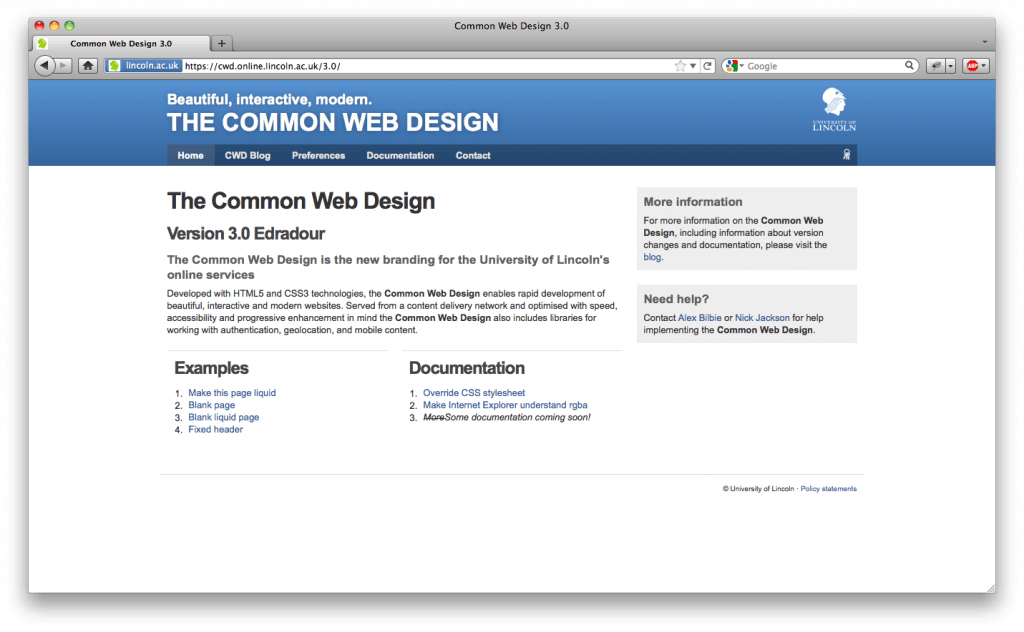
Almost a year ago we introduced the Common Web Design v2.0 (it was actually version 1.0 but we realised that a number already sites, developed before Nick and I started, we using a similar design). A year later 30 sites and applications are using it, as well as over 50 blogs.
We’ve learnt a lot about creating Internet Explorer CSS hacks to force it to do our will, watched the HTML5 and CSS3 standards develop, and we’ve created some gorgeous websites including Linking You, Print from My PC and Opportunities@Lincoln.
As we were developing Total ReCal we began to realise that the current CWD (version 2.3) wasn’t quite customisable enough for our needs. We still believe that the most recent version of that branch is brilliant for text heavy sites, we need a framework for developing web applications and very graphical sites.
For Total ReCal we ended up branched 2.3 to created CWDx:

CWDx 1.0 was built with using the new HTML5 and CSS3 standards however it wasn’t generic enough for normal sites. What we did gain from it though was a complete tidy up of the code and we removed some of the old hacks because they were no longer appropriate or we found better ways of doing them.
Enter version 3, “Edradour”
Using CWDx as the starting point for the typography and base reset styles, I ripped out Blueprint which we’d been using for our CSS grid and started from scratch designing a grid with 12 columns each with 10px padding to the left and the right of the column. This now gives us a grid of 984px (up from 950px when we used Blueprint). The HTML is now all HTML5 and is marked up with WIA-ARIA attributes for accessibility. We are encouraging the use of the new semantic elements such as <section>, <article>, <header> and <footer>.
All of the element IDs are now namespaced too, e.g. #cwd_header, #cwd_footer, etc, because this was causing us some problems before when integrating the CWD into existing sites.
I’ve also recently been working on our single sign on platform which the CWD will use to initiate a session for you (if you’re on a corporate desktop or are using Eduroam), and it will tie in with our future plans for a messaging platform for the student communications project. It’s all very clever! Additionally, the CWD will include a OAuth 2.0 user agent client library meaning that you can authenticate in a Facebook Connect / Twitter @anywhere style popup in a the page. Boom!
Other 3.0 features include drop-down menus (which don’t rely on JavaScript (!!!) and even work on iPhones + iPads), a beautiful typography framework (Arial <3) and lots of helper CSS classes to make your sites look gorgeous. We’re still bundling in jQuery and Modernizr in the JavaScript, and you can easily include jQuery UI with out custom theme.
We’ll be updating a number of sites currently using 2.3 to the new 3.0 version in the next few weeks and we’re very excited about the new possibilities this framework offers.
We are also this time properly committing to developing some useful documentation so watch this space!
Checkout the v3.0 website for some demos and early documentation.
